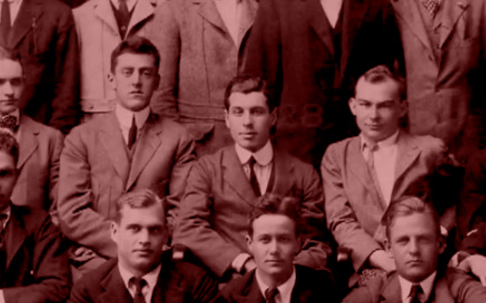Harvard University, the most prestigious ivy league school in the United States, holds a secret that has haunted it for the past 82 years. Let’s see what’s it about.
Harvard had a Secret Court that investigated homosexual activities of the Harvard population. The Court was formed in 1920 and was an ad hoc disciplinary tribunal as a response to the life and letters of Cyril Wilcox.
The Suicide of Cyril Wilcox
Cyril Wilcox, a Harvard undergraduate, committed suicide by inhaling gas at his parents’ Fall River home in Massachusetts on May 13, 1920. According to newspaper reports, the death was accidental. Initially, they thought it was due to his pressure with his studies. But the night before his death, Wilcox revealed his sexuality and affair with Harry Dreyfus, who was an older man from Boston. Wilcox told his secret to his older brother, George Lester Wilcox, who also went to Harvard.
George Wilcox found the letters Ernest Roberts, a Harvard undergraduate, and Harold Saxton, a recent graduate, wrote to Cyril. After reading their frank and thorough description of their activities, the older Wilcox believed that there were several gay students within the Harvard network. On May 22, George Wilcox found Dreyfus and thrashed him until he divulged the identities of three other guys involved. That afternoon, he met with Dean Greenough and relayed everything he knew, including the admittance of his brother having an affair with an older man and the contents of the letters. (Source: K12 Academics)
The Secret Court
Amit Paley, a reporter for the Harvard Crimson, discovered the “Secret Court Files, 1920” in 2002. The Secret Court was a secret tribunal consisting of five Harvard administrators, overseen by the Harvard University President Abbott Lawrence Lowell. (Source: Harvard News)
The tribunal consisted of the Acting Dean of the College Chester Greenough, Robert Lee, professor of hygiene and the doctor who oversees the students’ annual physical exam, Matthew Luce, responsible for student discipline and conduct, and two young men assistants Edward Gay and Kenneth Murdock.
The members called their union “The Court” to distinguish themselves from the regular Board of the University. Even the Ad Board was unaware of the Court’s existence for more than a week after it was constituted. When the Court informed the Board on June 1, it stated that it “had no inclination to intervene in the case and agreed that the subject should bypass the normal routes (Board and Faculty) and go directly to the President.”
The Court conducted a total of 30 interviews of students and university personnel between May and June in 1920. The Court issued and recorded a judgment of “guilty” for a total of 14 persons: seven college students, including one student from a dental school, an assistant in the Philosophy department, an alumnus, and four men unrelated to Harvard. (Source: The Crimson)
This affair led to at least one more suicide, the dental school student Eugene Cummings. It also led to an article in the Boston American on June 19 titled “Harvard Men Die Suddenly.”
Harvard’s Action Towards Gender Equality
Amit Paley’s discovery of the Secret Court files ignited a lot of discussion and actions towards the support of the LGBTQ community within the walls of Harvard. Paley founded and is the current CEO of The Trevor Project. It is a non-profit organization that provides suicide prevention services to young members of the LGBTQ community. (Source: Harvard News)
